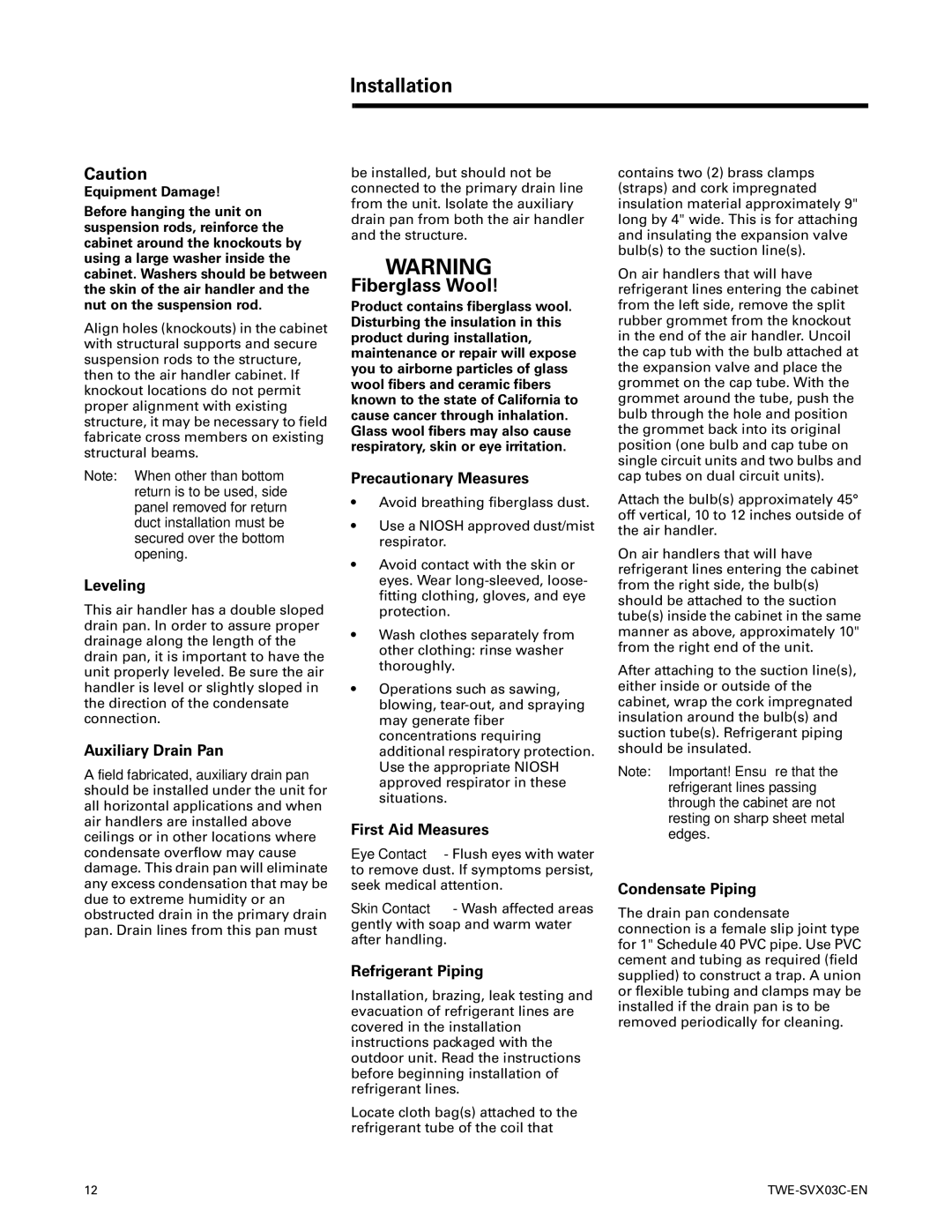TWE060B***E, TWE060A***E, TWE050AD**E, TWE200BD**F, TWE120A***F specifications
The American Standard TWE series of air handlers, including models TWE180B***E, TWE075AD**E, TWE100BD**E, and TWE240B***F, represent a blend of robust engineering, energy efficiency, and advanced technology designed to meet a variety of climate control needs in residential and light commercial settings.One of the standout features of these air handlers is their adaptability to both cooling and heating functions, particularly the heat pump configurations. This dual functionality makes them ideal for regions with fluctuating temperatures, providing comfortable indoor environments year-round. The TWE series can efficiently maintain desired temperatures, whether in cooling mode during hot summers or heating mode in colder months.
Energy efficiency is a hallmark of the TWE models. Many of these air handlers are equipped with high SEER (Seasonal Energy Efficiency Ratio) and HSPF (Heating Seasonal Performance Factor) ratings, ensuring that energy consumption is kept to a minimum. This not only contributes to lower utility bills but also aligns with contemporary environmental standards.
The TWE240B***F model exemplifies American Standard's commitment to quiet operation. Noise reduction features, such as insulated cabinets and optimized fan designs, ensure that the unit operates quietly, making it suitable for residential areas where noise can be a concern.
Durability and reliability are key characteristics of the TWE series. Constructed with high-quality materials, these air handlers are designed to withstand the rigors of varying weather conditions. Many units also come with extensive warranties, underscoring the confidence in their longevity and performance.
Installation flexibility is another advantage of the TWE series. These air handlers can be configured for horizontal or vertical applications, allowing for versatile installation options in different home layouts.
The TWE models are also compatible with advanced thermostats and zoning systems, enabling homeowners to optimize comfort and efficiency based on their specific needs. Smart technology integration further enhances control over indoor climates, ensuring that users can manage their environment conveniently.
In summary, the American Standard TWE series air handlers—TWE180B***E, TWE075AD**E, TWE100BD**E, and TWE240B***F—combine energy efficiency, versatility, quiet operation, and long-lasting durability. These features make them an excellent choice for those seeking reliable cooling and heating solutions in their homes or small commercial spaces.
